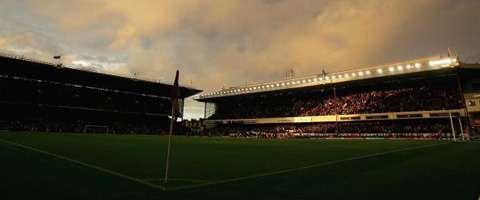The Manor Ground. 2nd September 1893. After a huge effort during the summer (mainly by volunteering supporters) an iron stand holding 2000 was erected and banking raised, which enable around 10,000 people to watch our first ever game in the Football League. The match against Newcastle United (also playing their first league match) ended in a 2-2 draw, our first league goal being scored by Walter Shaw. We had to wait nine more days for our first victory in the Football League, a 4-0 home victory against Walsall Town Swifts. The season was a steep learning curve for us, but we finished a very respectable 9th out of 15 with 28 points from 28 games.
The next couple of seasons saw us establish ourselves in mid table. Whilst we enjoyed excellent home results, our away form was patchy at best. Travel was probably a major factor in this. As the only team based in the south of England, it meant long journeys to all our away games (and conversely for our visitors), which due to the poor transport of the time would have been extremely tiring.
As an aside many people would consider football violence to be a relatively modern phenomenon, but that is far from true as it was pretty endemic in those early years. In fact the Football League ordered the Manor Ground be closed for 2 league games in the spring of 1895 after major crowd disturbances at a game led to the referee being attacked.
1896/97 was an unremarkable season, remembered only for our club record defeat, going down 0-8 in an away game at Loughborough. In defence of the team it should probably be noted that we also had to play an F.A. Cup game at home to Leyton on the same day, which we won 5-0.
Our club continued to consolidate its position throughout the decade, and in 1896 the magnificently named Caesar Augustus Llewelyn Jenkins became the first player to receive international honours whilst at Arsenal, when he was chosen in the Welsh side to play Scotland.
Although Sam Hollis had been acting as secretary/manager (the job in those days was very different to today, more an administrative post than anything else), in 1897 Thomas Mitchell, a Scot, was appointed as our first professional secretary/manager.
By the turn of the century, however, we were in serious financial trouble. The South Africa (Boer) War (1899-1902) had a devastating effect on attendances, which were already dropping. As the majority of our supporters at the time were either servicemen or workers at the munitions factory, they were either away fighting or having to work when matches were taking place. We only survived due to the generous financial help of Mr. G.H. Leavey and some inspired fund raising, which included £1200 being raised by an archery tournament.
The only real high point in this period was beating Loughborough 12-0 in March 1900, to avenge our record defeat. Unfortunately, as the game was played on a Monday afternoon, only 600 people attended (what is still) our record league victory.
After finishing forth and third in the previous two seasons, a 0-0 draw on the last day of the 1903/04 season was enough to ensure we finished in second place (1 point ahead of Manchester United) and gain promotion to the first division of the Football League for the first time in out history.
During the summer further improvements were made to the ground, which included a new stand. The height of this stand reminded many soldiers of the infamous hill Spion Kop where many lives had been lost during the Boer War, and this became its name. Many clubs later copied the name, most famously Sheffield Wednesday and Liverpool, but the first ‘Kop’ was at the Manor ground. Somewhat ironically, our first game in the first division, as in the second, was against Newcastle United. This time we were playing away from home and the long trip north resulted in a 0-3 defeat to the eventual champions.
Our first few seasons in the top division saw us comfortably placed in mid table. 1905/06 and 1906/07 also saw us reach the semi finals of the F.A. Cup where we lost to Newcastle United and Sheffield Wednesday respectively. Off the field things were not so good though. Competition for supporters was coming not only from the by now powerful Southern League, but also from the fact that there were four other London teams in the Football League, all in far more accessible locations. Plumstead was especially ill served in the way of transport from the city, and the local support (though loyal and enthusiastic) was not enough. In the summer of 1908 things reached crisis point, and players had to be sold. In fact, in the next 12 months virtually all the leading players were sold to raise funds. In 1909/10 we only avoided relegation by 2 points, and on April 26th (3 days after the end of the season) the club was reconstituted, the old company having been liquidated.


